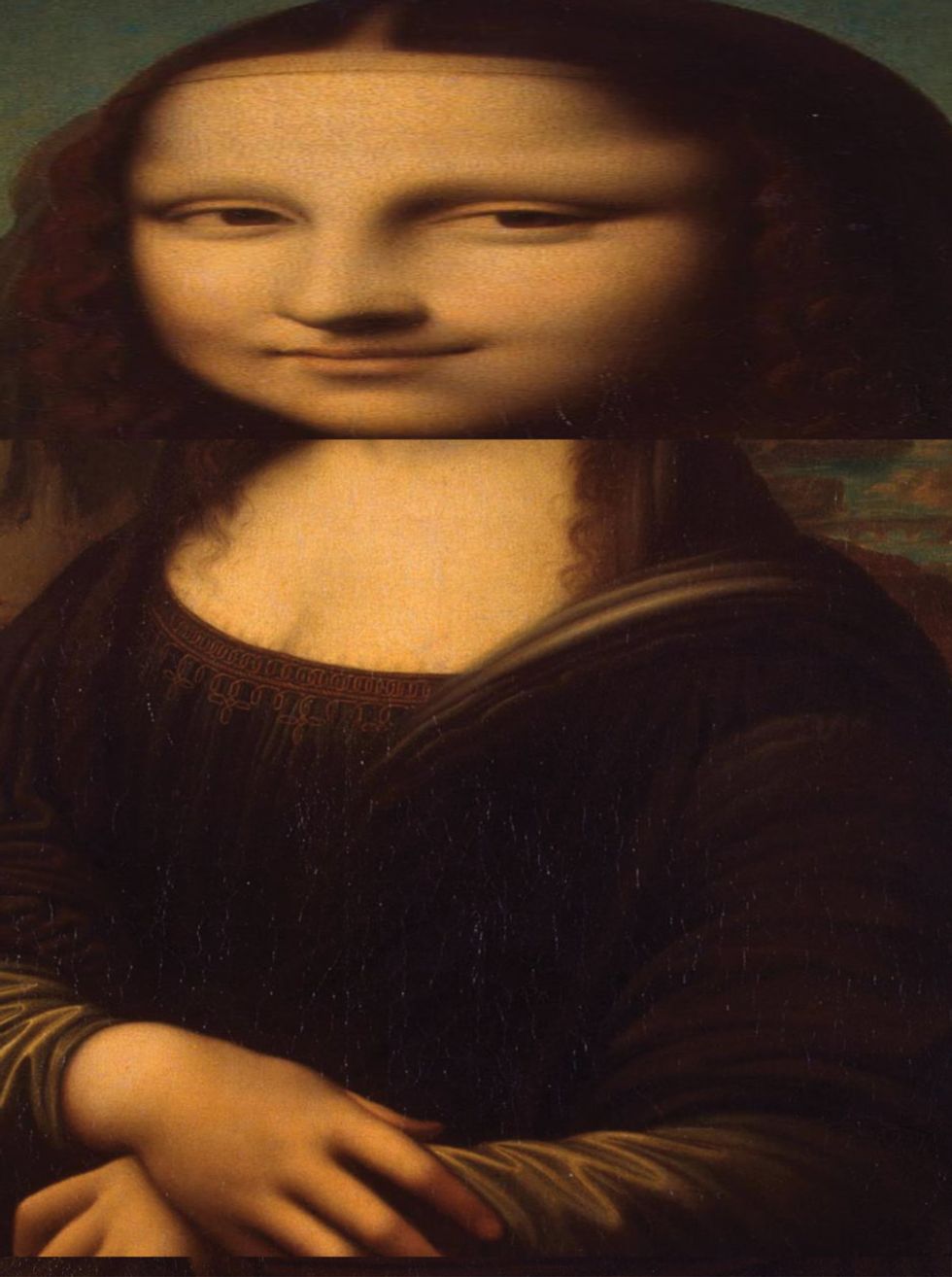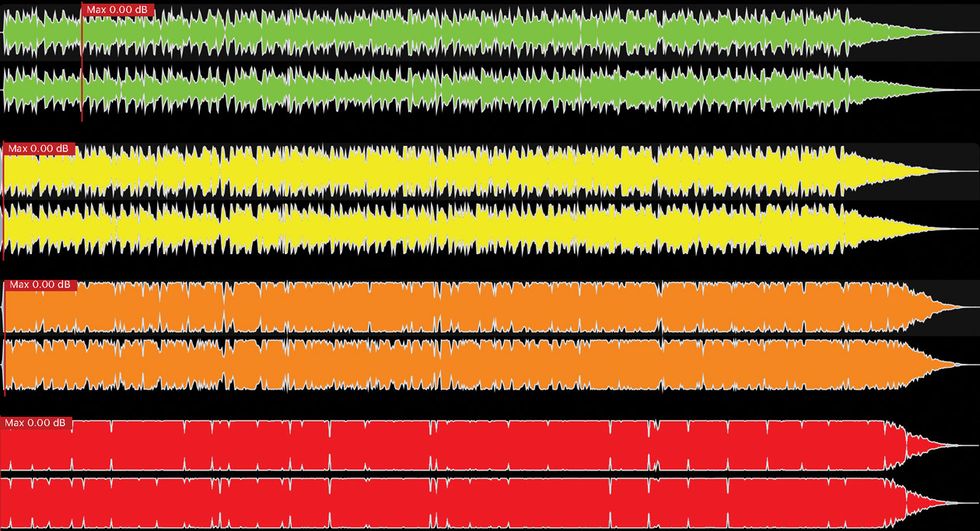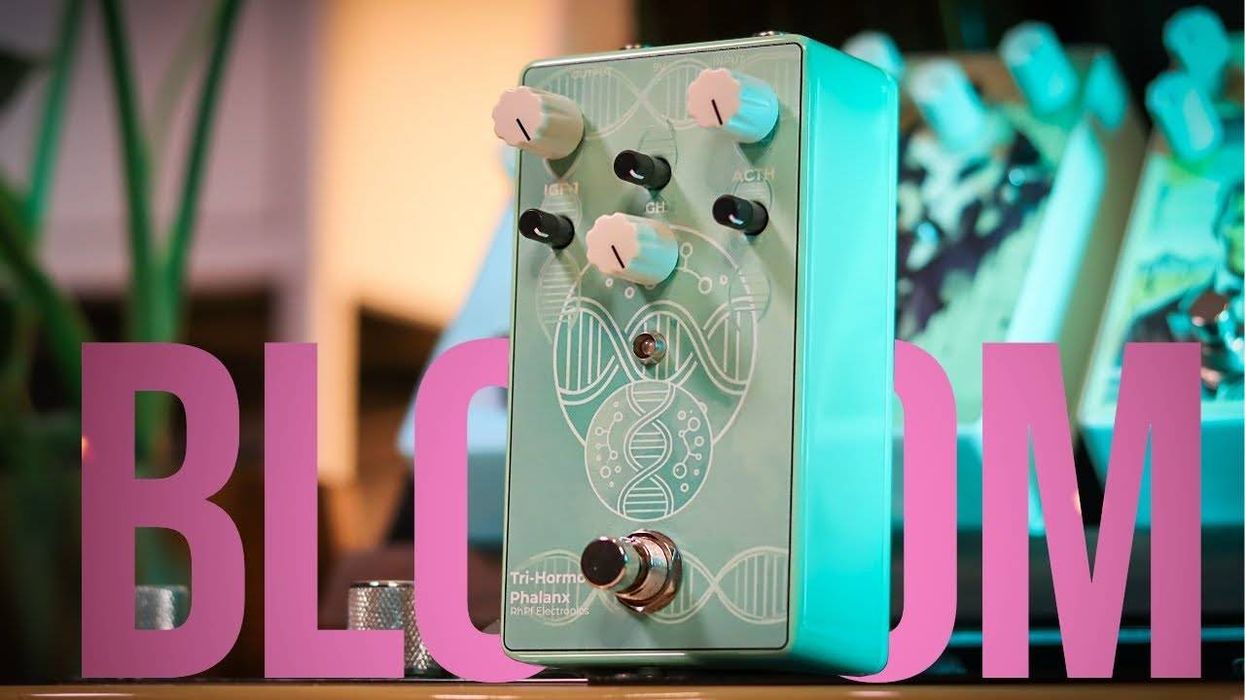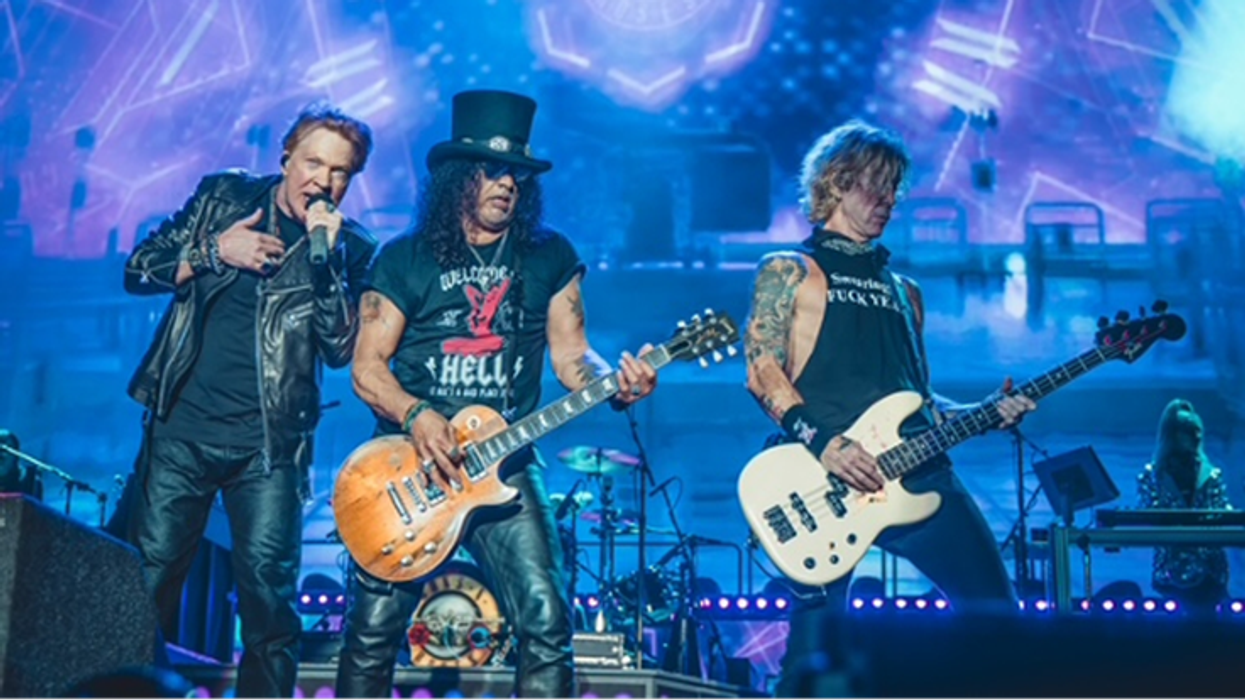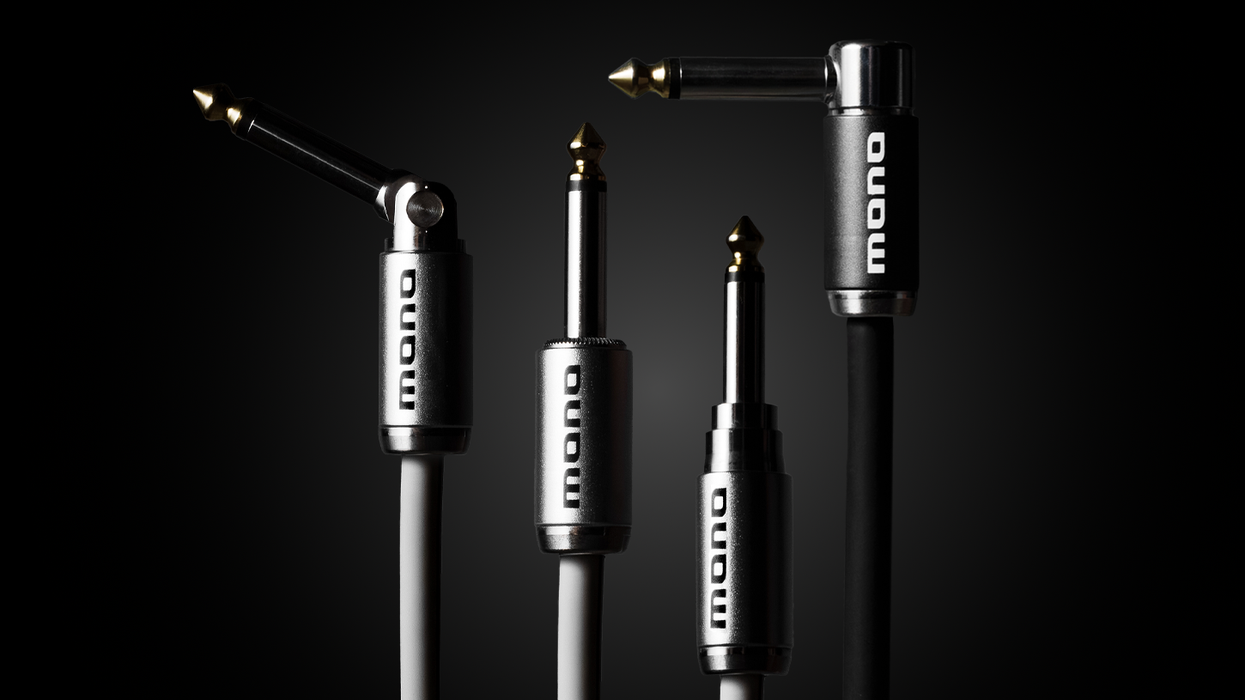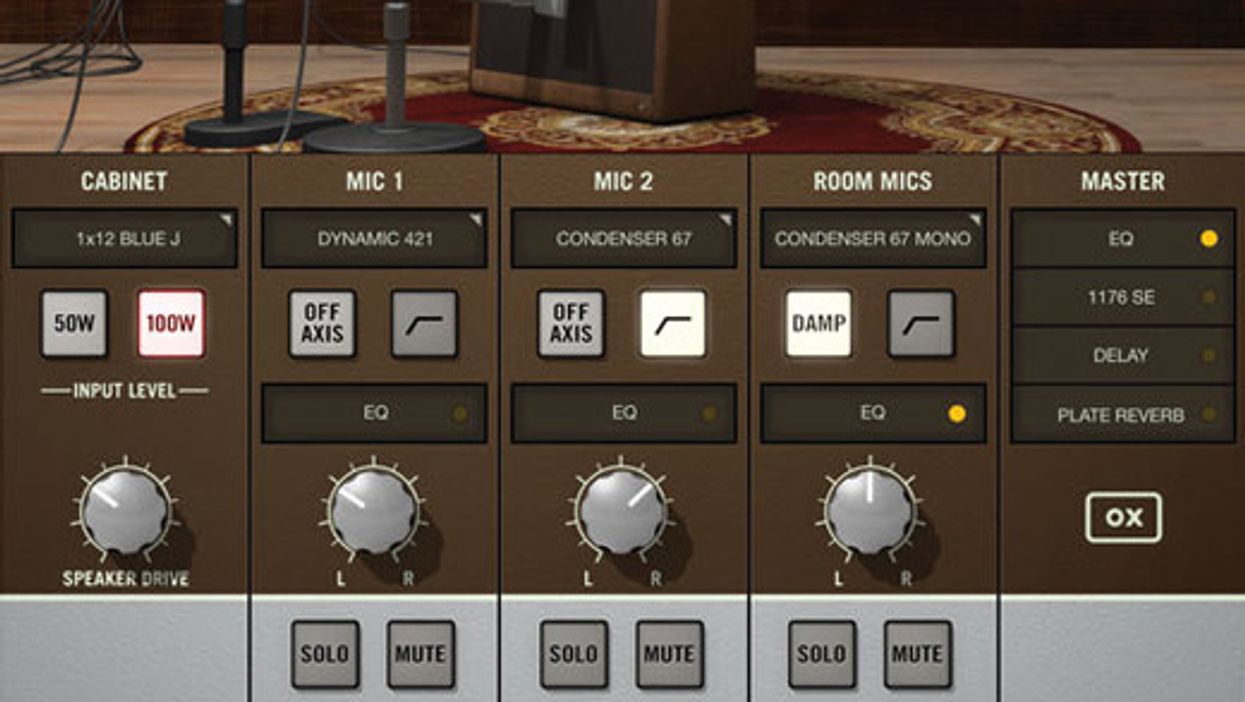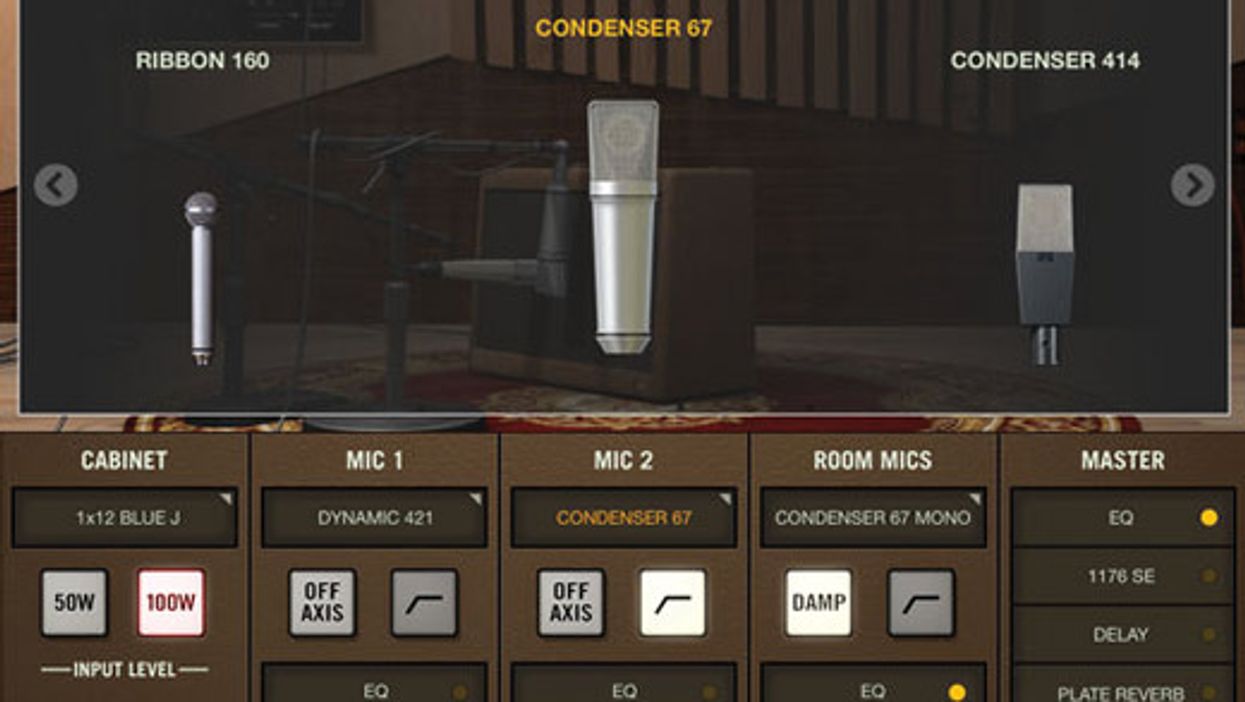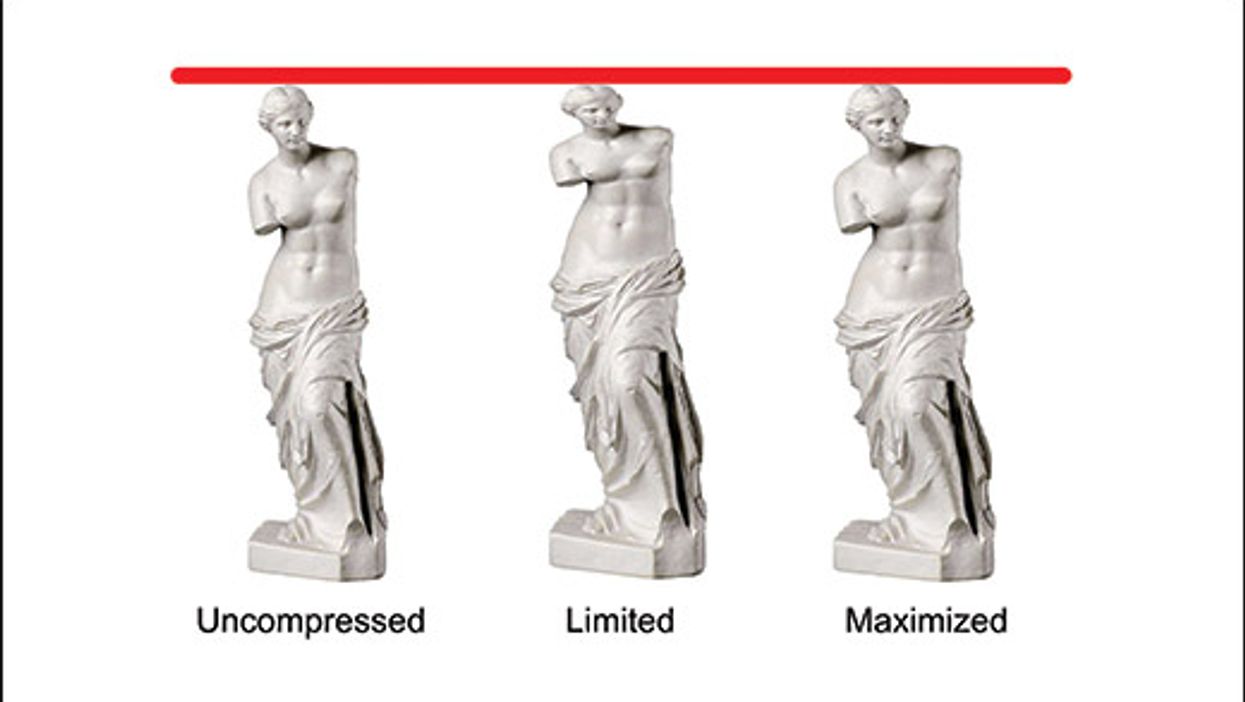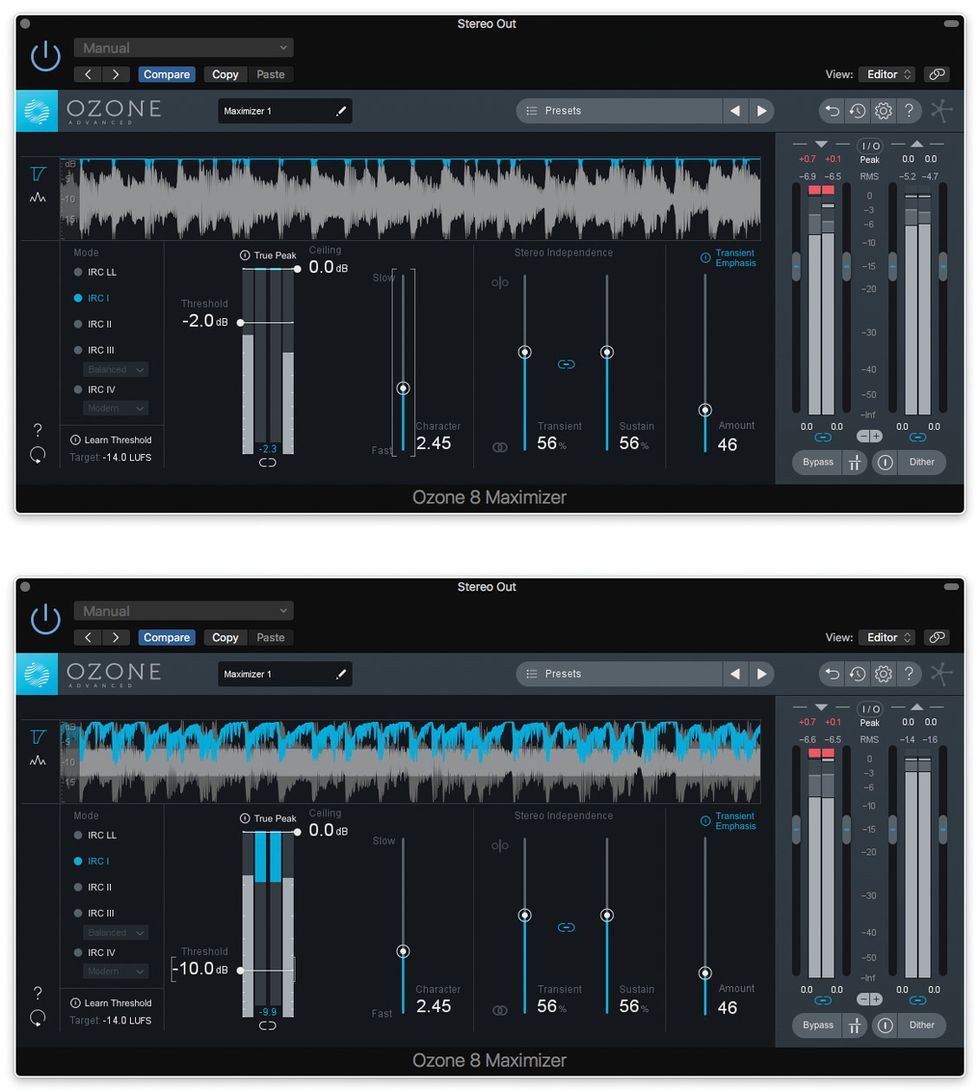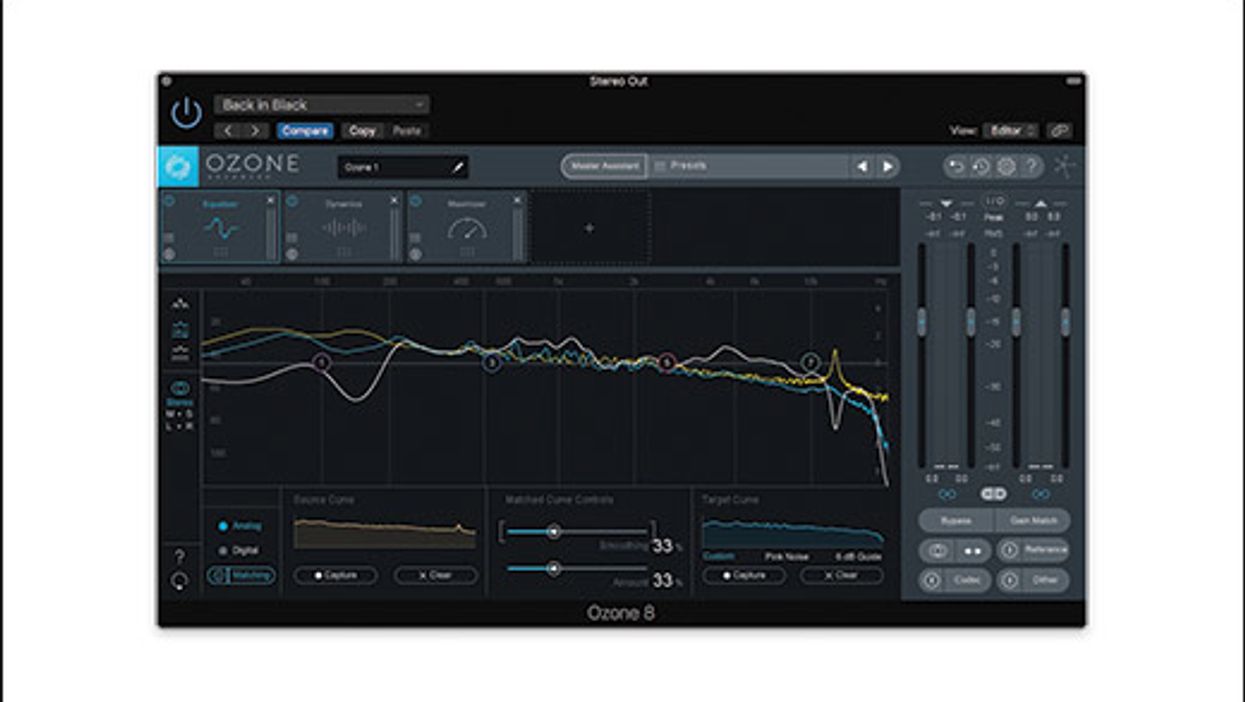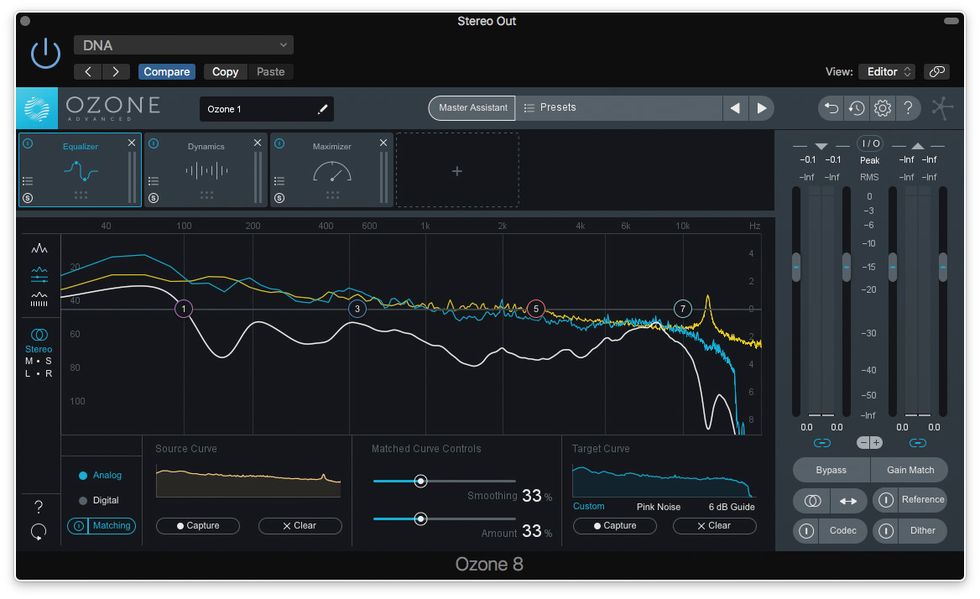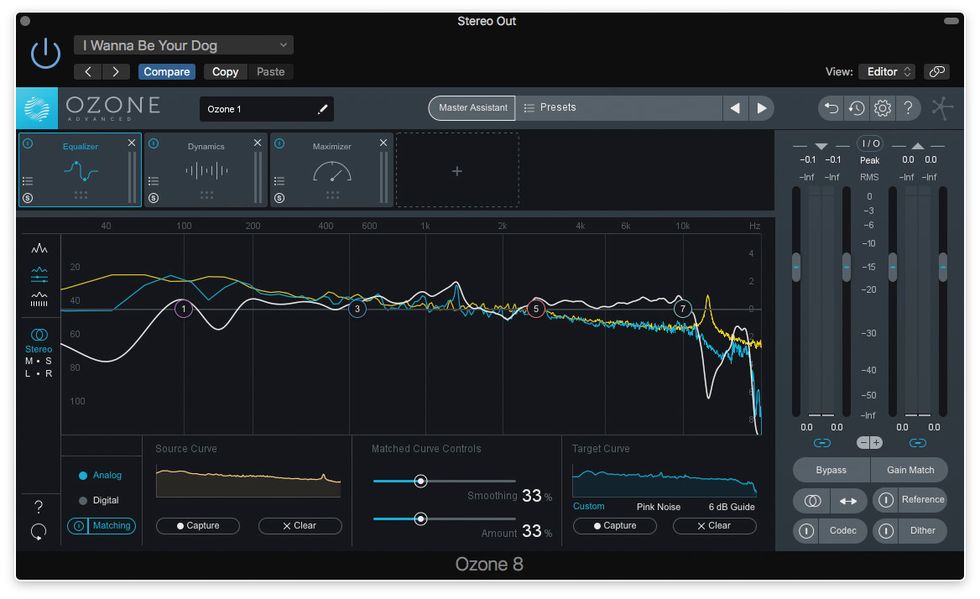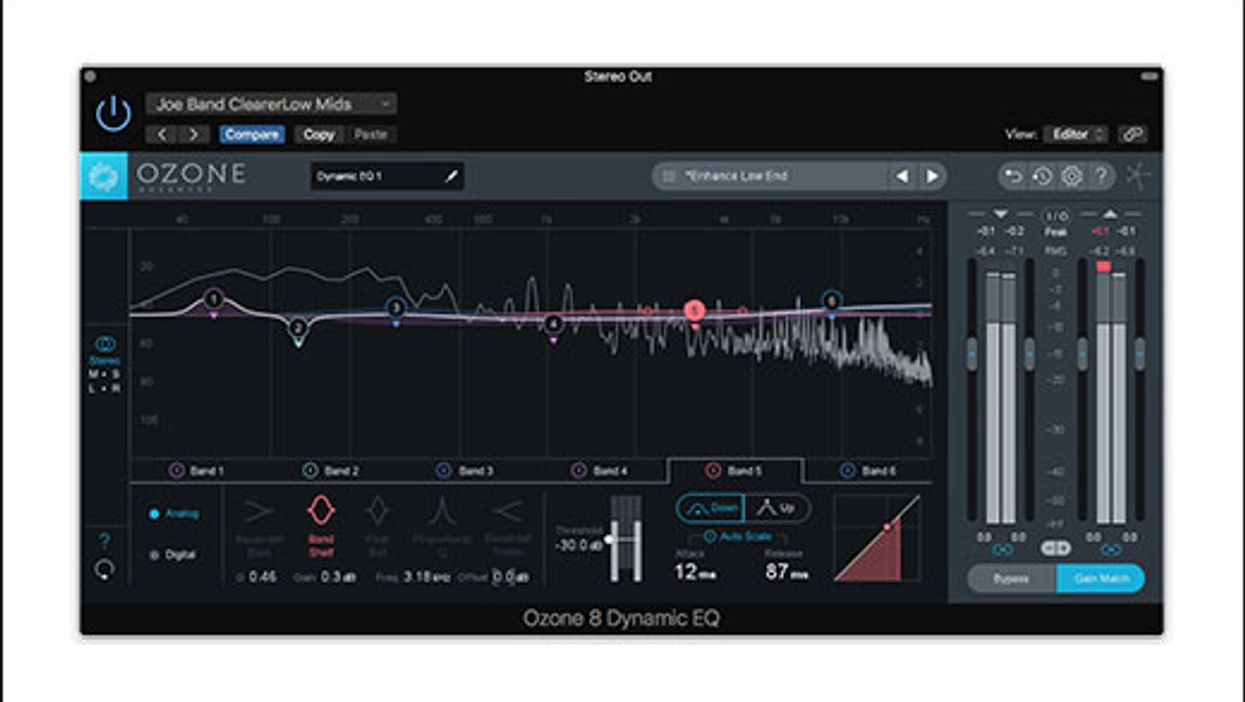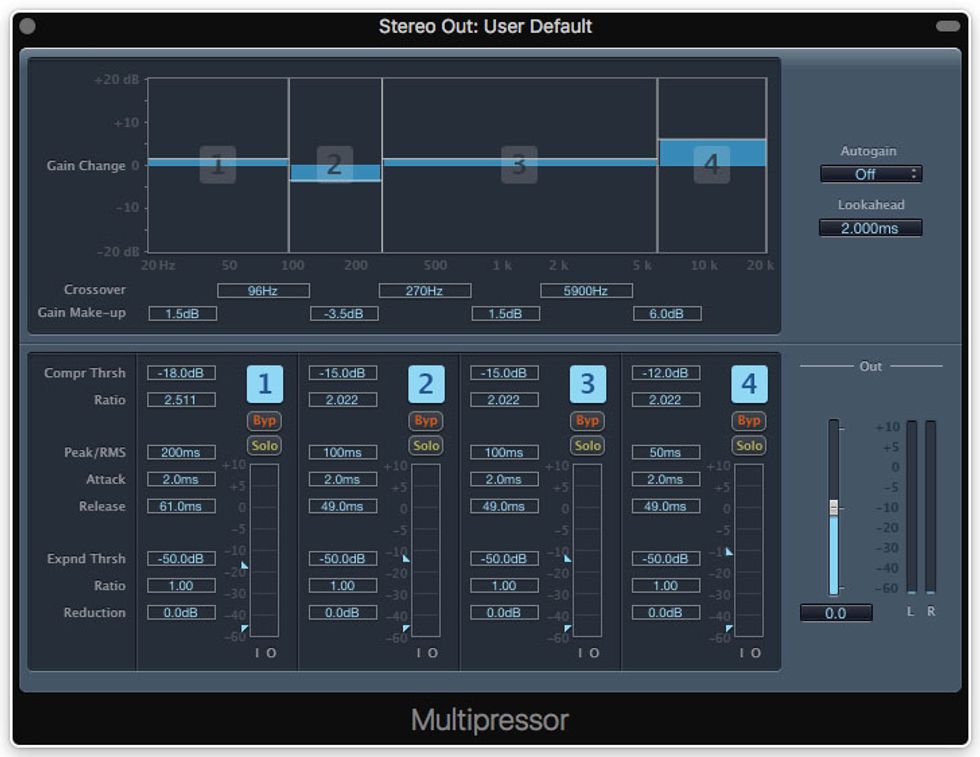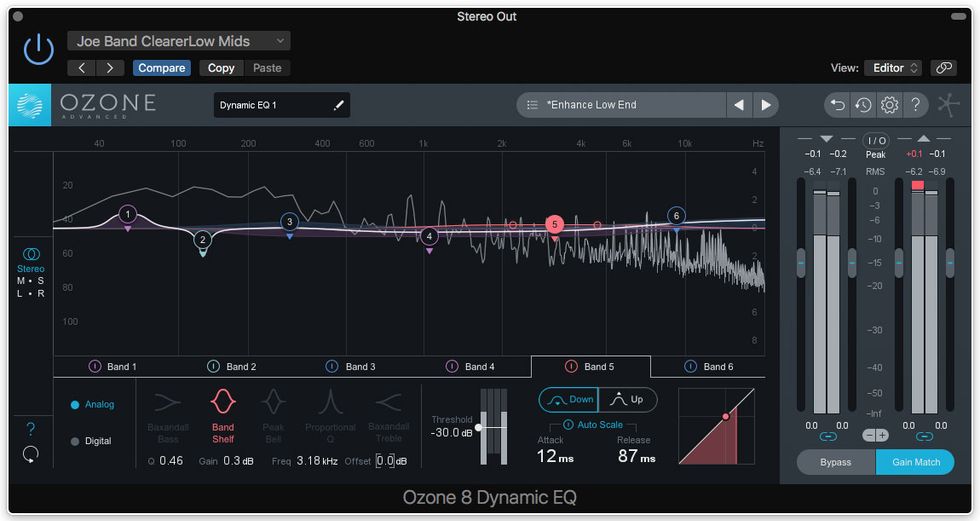For several months, we’ve explored ways that mastering techniques can add drama to your mixes. But those techniques can also rob your recordings of musicality and impact. After all, these are the very techniques used by many music industry professionals to create boring and obnoxious rock and pop tracks.
Thanks to digital technology, we can make recordings louder than ever before. True, volume has a hard limit: the point at which the recording crosses into digital distortion. But multi-band compression, limiting, and maximizing can raise the level of a recording’s quieter passages till they’re as loud as the highest peaks. Taken to extremes, there’s almost no dynamic variation, and no moments for our ears to rest before the next point of impact.
Maximum Mona. Whether we’re talking painting or audio files, consuming every iota of available space is rarely attractive, as symbolized by my Limited Mona Lisa portrait (Image 1). We need the audio equivalent of what visual artists call “negative space”—unpopulated portions of the piece whose emptiness/quietness makes the busy/loud parts feel exciting. But countless rock and pop recordings of the last 25 years are more like Maximum Mona than Leonardo’s original. Image 2 shows what happens to a waveform when it receives such treatment. There’s more total energy, but at the expense of drama and variety.
Image 2
Few audio pros dig this trend, so why do they do it? Partly it’s because our ears like loudness, at least to a degree. Our hearing isn’t linear. When music gets quiet, we perceive less low end relative to everything else. (For a scientific explanation of this, google “Fletcher-Munson curve.”)
But the abuse of loudness is about competition and fear. This attitude has long been prevalent in radio, where loudness is a genuine advantage as listeners scroll through the dial. But in the early ’90s, producers and mastering engineers launched a volume arms race. Even though many technicians knew this is a bad idea, they feared that their mixes would sound wimpy alongside their competitors’ work. Thus began what the recording industry calls “the loudness wars.”
Extra-Limp Bizkit. I first realized how extreme this was in 2001, when I was doing some in-house work at Interscope Records. One day in the studio I encountered mastered files for a Limp Bizkit track. The waveforms in Pro Tools had no peaks or valleys whatsoever. It was just a fat sausage of nasty-sounding loudness.
Here’s a quick guide to loudness abuse. In Clip 1, you hear the original mix, already with a fair amount of compression. In Clip 2 through Clip 11, I edge up the limiter setting, starting with 2 dB’s worth all the way up to a massive 20 dB reduction.
I’ve used one of the limiter plug-ins from Ozone 8, iZotope’s suite of mastering tools. It’s damn good software. It’s amazing how decent the morbidly over-limited tracks sound! But even though I monitored at low volume, a headache descended at around the time I crossed the -10 dB threshold. (Try toggling between Clip 1 and Clip 11. The contrast isn’t subtle.)
Loudness war correspondent. There’s a long chapter on this topic in Greg Milner’s Perfecting Sound Forever, a brilliant book on recording technology. Milner covers the entire history of recorded sound, with an emphasis on the ways evolving technology changes music, rather than the other way around. (Historians would call this viewpoint “technological determinism.”) He dissects such notoriously over-limited albums as Red Hot Chili Peppers’ Californication, Rush’s Vapor Trails, and Oasis’s (What’s the Story) Morning Glory?
Since Milner’s book was written, there’s been some much-needed backlash to the loudness wars. Still, at the recent NAMM show in Anaheim, one of mainstream rock’s most successful mixing engineers displayed some of his tracks on the big screen. They all looked like that 2001 Limp Bizkit track: total sausage party.
Only you can determine the amount of limiting that brings your mix to life and the amount that squashes it dead. As you experiment, consider this: If you want something to sound really loud, juxtapose maximum and minimum levels. When you hear an oldies jukebox, Joan Jett’s “I Love Rock ’n’ Roll” sounds louder than anything else because there’s silence between every big beat. Much hip-hop and EDM works the same way. The artful use of negative space can make your music loud and dramatic.
